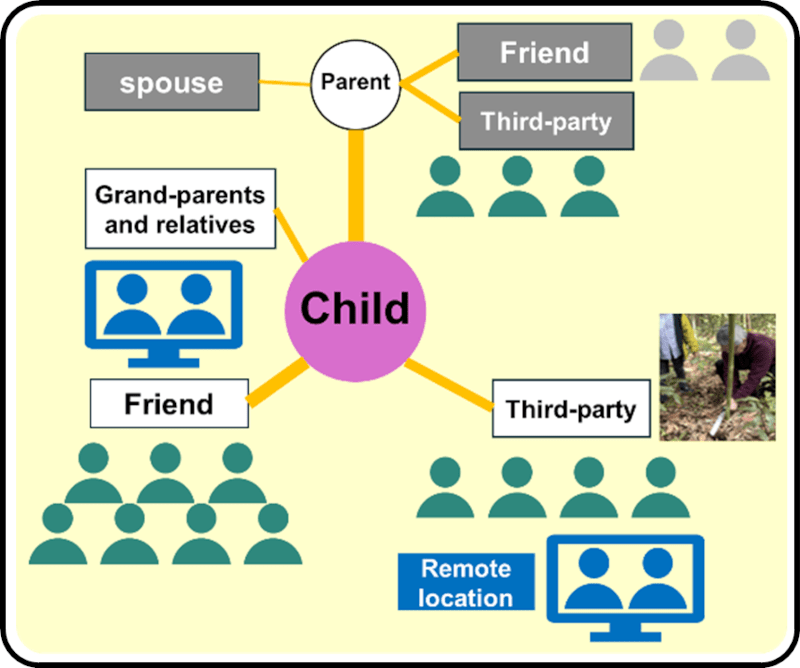Progress Report
Child Care Commons:Building the System Requirements of Alternative Relatives for Our Parenting[2] System Design of Child Care Commons
Progress until FY2024
1. Outline of the project
This Research and Development project aims to establish the requirements for a system that will be necessary to realize Child Care Commons (CCC). To achieve this goal, we will identify a set of functions that should be realized by the system and examine the requirements for technologies that can implement these functions. we will also consider the effect of CCC on parents, their children, and third parties.
Task 3: Create ICT systems necessary for CCC operation
In CCC activities, we establish digital technology requirements supporting diverse individuals (beyond parents) to participate actively, flexibly, and responsibly in childcare. Specifically, we use everyday technologies like SNS to visualize social relationships from communication logs, enhancing participants' awareness of their roles and motivation. Additionally, we support ensuring the authenticity of information about relationships among parents, children, and third parties, and recognizing the value of those relationships, potentially through blockchain or similar technologies.
Task4: Evidence and acceptability that support CCC
We will consider the effect of CCC on children, parents, and third parties (participants), and how CCC can have a positive effect on parents, children, and third parties, and examine the evidence for this from the perspective of neuroscience and psychology.
2. Outcome so far
Task 3: Create ICT systems necessary for CCC operations
We collaborated with Task 5 and organized technical specifications and data operations for the CCC system, enabling the application of existing and related technologies to parent-child relationships. Additionally, we validated a system for visualizing social relationship using real data from Task 2, which conducted CCC practice.

Task 4: Examining the benefits of CCC from cognitive neuroscience
- A: Clarifying the neural basis of individual characteristics
- A survey that was conducted to 292 university students showed that those who had rich social relationships with trustworthy third parties during childhood were more likely to report higher well-being as adults.
- Through the other survey that was conducted to 4,000 people (aged 4 to 85), we found that there was clear dichotomy between those who had few people they could rely on when in trouble (blue) and those who had many people they could rely on (pink) (see above Figure).

- B: Examining the relation between social relationship capital/social networks in early childhood, school-age, and adolescence and subsequent well-being
- Regarding this disparity in social capital, brain imaging analysis (fMRI) of 109 adults showed that people with rich social capital had more developed brain regions associated with empathy than those without such social capitals.

3. Future plans
In the future, we’ll design a system that integrates the requirements we have established, as well as accumulate evidence on the benefits of CCC and develop an environment that will allow people to participate in CCC without worry.